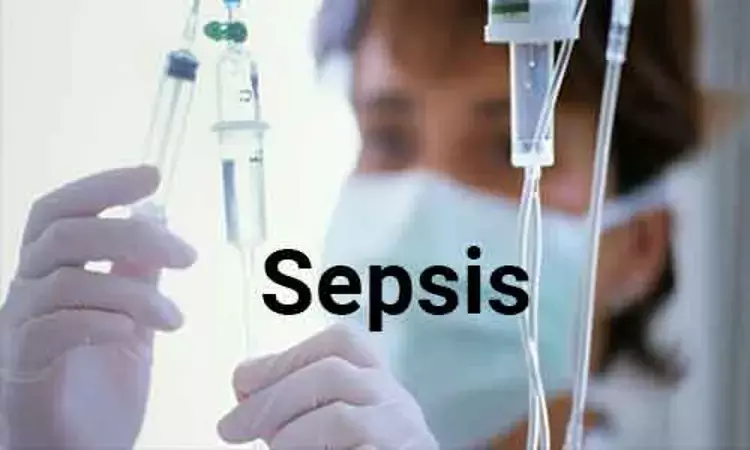- Home
- Medical news & Guidelines
- Anesthesiology
- Cardiology and CTVS
- Critical Care
- Dentistry
- Dermatology
- Diabetes and Endocrinology
- ENT
- Gastroenterology
- Medicine
- Nephrology
- Neurology
- Obstretics-Gynaecology
- Oncology
- Ophthalmology
- Orthopaedics
- Pediatrics-Neonatology
- Psychiatry
- Pulmonology
- Radiology
- Surgery
- Urology
- Laboratory Medicine
- Diet
- Nursing
- Paramedical
- Physiotherapy
- Health news
- Fact Check
- Bone Health Fact Check
- Brain Health Fact Check
- Cancer Related Fact Check
- Child Care Fact Check
- Dental and oral health fact check
- Diabetes and metabolic health fact check
- Diet and Nutrition Fact Check
- Eye and ENT Care Fact Check
- Fitness fact check
- Gut health fact check
- Heart health fact check
- Kidney health fact check
- Medical education fact check
- Men's health fact check
- Respiratory fact check
- Skin and hair care fact check
- Vaccine and Immunization fact check
- Women's health fact check
- AYUSH
- State News
- Andaman and Nicobar Islands
- Andhra Pradesh
- Arunachal Pradesh
- Assam
- Bihar
- Chandigarh
- Chattisgarh
- Dadra and Nagar Haveli
- Daman and Diu
- Delhi
- Goa
- Gujarat
- Haryana
- Himachal Pradesh
- Jammu & Kashmir
- Jharkhand
- Karnataka
- Kerala
- Ladakh
- Lakshadweep
- Madhya Pradesh
- Maharashtra
- Manipur
- Meghalaya
- Mizoram
- Nagaland
- Odisha
- Puducherry
- Punjab
- Rajasthan
- Sikkim
- Tamil Nadu
- Telangana
- Tripura
- Uttar Pradesh
- Uttrakhand
- West Bengal
- Medical Education
- Industry
Thromboelastogram may predict severity of organ dysfunction in sepsis, finds study

Recent research reports have put forth that a subset of patients with severe sepsis without overt bleeding are hypocoagulable and can be successfully detected by thromboelastogram. The study, published in Journal of Critical Care, has further affirmed that hypocoagulability is associated with mortality and need for transfusion.
Coagulation abnormalities are not infrequent in sepsis.to date, it is unclear if abnormalities in thromboelastogram (TEG) are associated with mortality in patients with severe sepsis without overt bleeding.
In this prospective study, patients were categorised as those with normal coagulation, hypercoagulable or hypercoagulable state based on admission TEG parameters (R time, K time, Maximum amplitude (MA), α angle). Their association with mortality was explored using Fisher's exact and Mann-Whitney U test as appropriate.
Results highlighted some key facts.
- The study cohort (n = 87; 49 male) with median (IQR) age 51 (42–60) years and admission SOFA score 8 (6–11) included scrub typhus (24.1%), pneumonia (22.6%) and urosepsis (10.3%).
- Non-invasive and invasive ventilation and vasopressors were required in 28.1%, 68.9% and 74%, respectively.
- Mortality was 24.1%. Based on R time, K time and α angle, 3.5% to 9.3% had a hypercoagulable state and 26.7 to 29.9% were hypocoagulable.
- Prolonged R time (p = 0.04) and reduced alpha angle (p = 0.01) in patients with hypocoagulable state was associated with mortality.
- K time, α angle and MA were significantly different in patients requiring transfusion (p < 0.001).
The key highlights of the result are –
- Coagulation abnormalities are frequent in patients with sepsis with organ dysfunction even in the absence of overt bleeding.
- Thromboelastogram correlated with severity of organ dysfunction and subsequent transfusion requirement in these patients.
- Thromboelastogram may be useful in the prognostication of patients with sepsis without overt bleeding.
"Overall observations support the correlation of thromboelastogram with severity of organ dysfunction and subsequent transfusion requirement in these patients. They suggest a possible utility of thromboelastogram in the prognostication of patients with sepsis without overt bleeding."the team concluded.
For full article follow the link: https://doi.org/10.1016/j.jcrc.2021.06.005
Source: Journal of Critical Care
Dr Satabdi Saha (BDS, MDS) is a practicing pediatric dentist with a keen interest in new medical researches and updates. She has completed her BDS from North Bengal Dental College ,Darjeeling. Then she went on to secure an ALL INDIA NEET PG rank and completed her MDS from the first dental college in the country – Dr R. Ahmed Dental College and Hospital. She is currently attached to The Marwari Relief Society Hospital as a consultant along with private practice of 2 years. She has published scientific papers in national and international journals. Her strong passion of sharing knowledge with the medical fraternity has motivated her to be a part of Medical Dialogues.
Dr Kamal Kant Kohli-MBBS, DTCD- a chest specialist with more than 30 years of practice and a flair for writing clinical articles, Dr Kamal Kant Kohli joined Medical Dialogues as a Chief Editor of Medical News. Besides writing articles, as an editor, he proofreads and verifies all the medical content published on Medical Dialogues including those coming from journals, studies,medical conferences,guidelines etc. Email: drkohli@medicaldialogues.in. Contact no. 011-43720751


